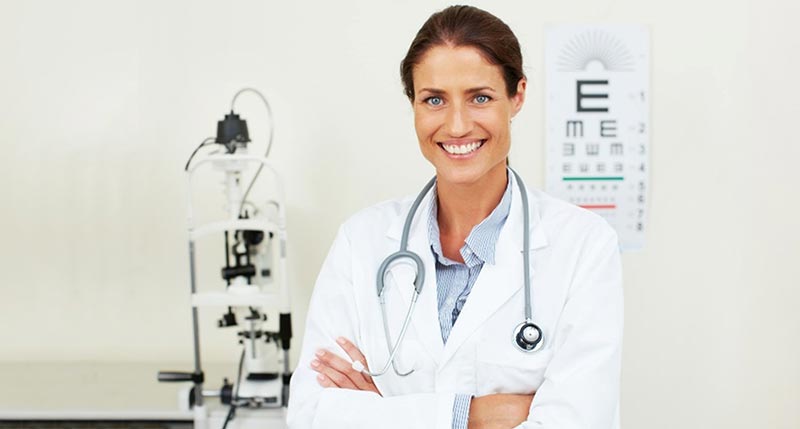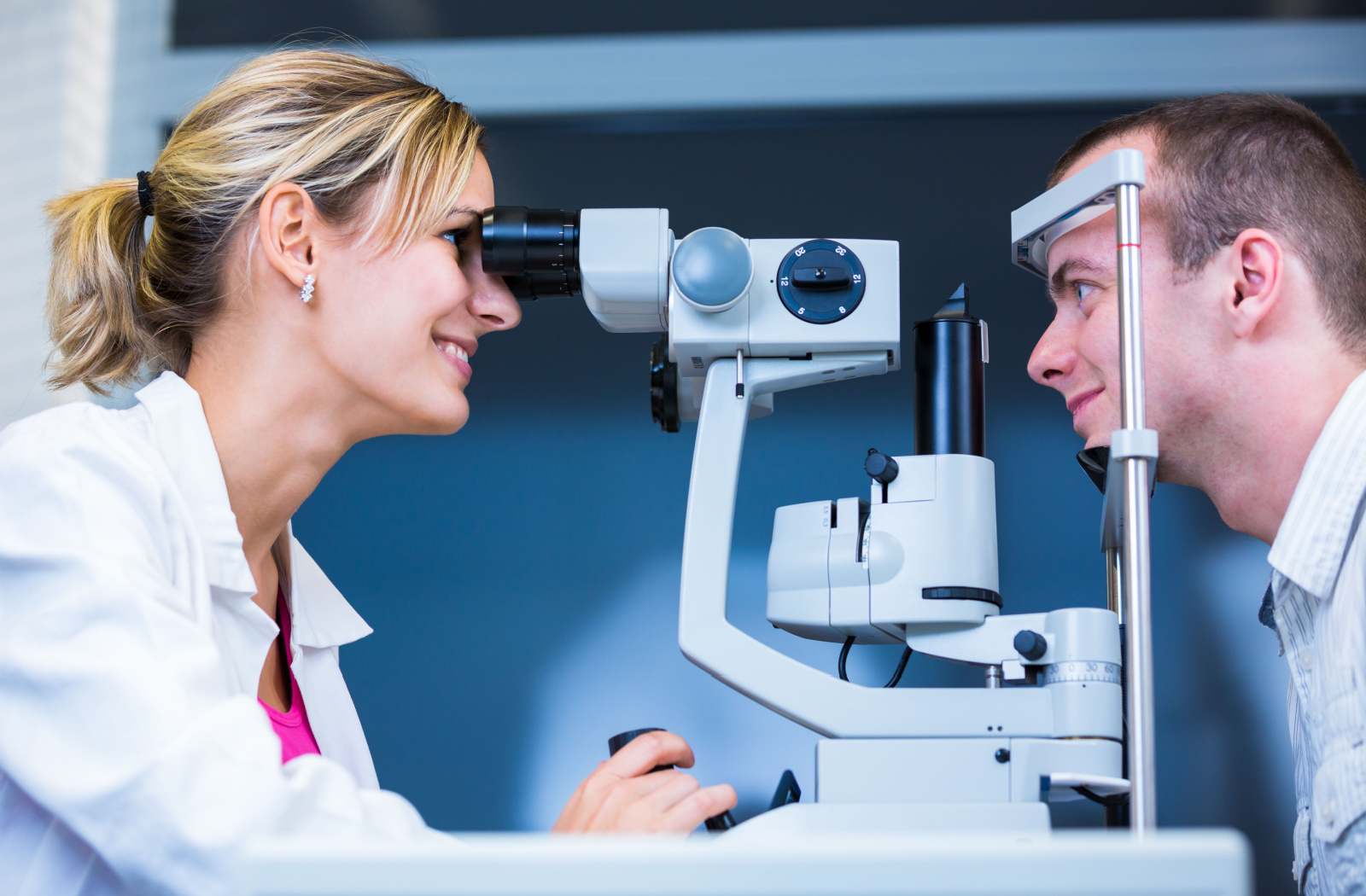Expert Eye Doctor in Riverside: Your Vision is Our Top priority
Wiki Article
The Comprehensive Eye Exam: What to Expect Throughout Your Visit to the Eye Physician
A see to the eye doctor for a comprehensive eye exam is more than a regular examination; it is a crucial action in protecting your visual health and wellness. From the first conversation of your medical background to the precision of the visual acuity test, each component of the exam serves a details objective. Yet exactly what takes place throughout the eye wellness assessment, and just how does it influence the prescription process? Recognizing these components is necessary for those that want to preserve optimal sight. As we check out each component, the importance of follow-up recommendations will certainly likewise become clear.First Appointment
The first assessment during an eye test serves as an essential structure for recognizing an individual's aesthetic health and wellness needs. This phase establishes the tone for the whole evaluation procedure, enabling the optometrist to collect crucial details regarding the patient's case history, lifestyle, and details vision concerns. By diligently assessing any type of pre-existing problems, medicines, or previous surgeries, the eye treatment professional can tailor the assessment to address specific requirements efficiently.
Moreover, the first assessment is a possibility for patients to articulate any kind of issues or concerns, fostering a collaborative relationship with their health care service provider. This interaction not only makes sure that the individual really feels notified and comfortable but also empowers them to participate proactively in their eye health and wellness administration. Jointly, these discussions make it possible for the eye doctor to devise a tailored exam strategy, guaranteeing optimal care and specific medical diagnosis.
Visual Skill Test
Kicking off the core parts of an eye examination, the aesthetic acuity examination is designed to evaluate the sharpness and clarity of a client's vision. This crucial analysis helps establish just how well a person can recognize letters or symbols at a standardized range, normally utilizing a Snellen chart (Eye Doctor). The graph consists of rows of letters that decrease in size from top to bottom, with the person positioned at a normal distance of 20 feet
During the examination, the person is asked to cover one eye and check out out loud the smallest line of letters they can see clearly. This process is duplicated for the various other eye. The outcomes are tape-recorded as a portion, with 20/20 vision showing normal visual skill-- where the person can see at 20 feet what a person with normal vision can see at that distance.
The visual skill examination additionally determines potential refractive errors such as myopia, hyperopia, or astigmatism, which might require restorative lenses. By developing a standard of aesthetic efficiency, the examination is a vital analysis device that assists the eye treatment specialist in developing an ideal therapy strategy tailored to the patient's special visual needs.
Eye Health Assessment
Following the visual acuity test, a detailed eye health evaluation is carried out to make sure the total health of the eyes. This essential section of the eye examination involves an extensive examination of both the interior and outside structures of the eye. The ophthalmologist or eye doctor starts by examining the eyelids, cornea, conjunctiva, and sclera for any signs of infection, inflammation, or problems. Utilizing specific devices like a slit light, the professional acquires a multiplied sight of the eye's makeup, allowing comprehensive inspection.Via the usage of ophthalmoscopy or fundus photography, the retina, optic nerve, and blood vessels are carefully evaluated. In many instances, pupil expansion is carried out to improve exposure of the inner eye frameworks, although this may result in short-term light sensitivity for the person.
Furthermore, intraocular stress is gauged to screen for glaucoma risk. This is usually done using tonometry, which can find raised stress levels that may suggest possible damages to the optic nerve. Collectively, these analyses develop an extensive evaluation to preserve ocular wellness.
Refraction and Prescription
Just how does one guarantee optimal vision? An essential step depends on the procedure of refraction and obtaining a precise prescription. Refraction is an innovative procedure carried out by eye care experts to establish the exact lens power needed to remedy refractive errors such as nearsightedness, astigmatism, hyperopia, and presbyopia. The objective of this procedure is to examine how light bends as it travels through the eye, enabling the professional to figure out whether corrective lenses are necessary for improved visual skill.Throughout the refraction procedure, the person is asked to check out a phoropter, a tool that contains different lenses. The expert will methodically change these lenses and ask the client to contrast clarity in between choices up until the very best feasible vision is attained. This treatment is essential in crafting a precise prescription that defines the suitable lens power for spectacles or call lenses.
The prescription originated from this procedure not just maximizes vision however additionally works as a structure for choosing appropriate rehabilitative eyewear. It is important to guarantee that prescriptions are on a regular basis upgraded, as adjustments in vision can take place over time, emphasizing the value of regular eye evaluations. This additional resources careful focus to detail aids maintain clear, comfortable vision in every day life.
Follow-Up Recommendations

Throughout a follow-up see, the eye medical professional will perform a collection of tests to evaluate aesthetic acuity and look for any type of changes in vision that might necessitate an update to the prescription. In addition, the follow-up supplies a chance to discuss any type of pain or issues experienced with current glasses. Changes can be made to ensure comfort and efficacy, whether with lens alteration or framework changes.
For patients with ongoing problems such as glaucoma, diabetes-related eye problems, or macular degeneration, even more regular follow-ups might be necessary. These appointments are important for managing and potentially slowing the development of eye disease. Sticking to these recommendations can dramatically add to maintaining visual wellness and protecting against lasting problems.
Verdict
The detailed eye test read the article is a necessary process for preserving visual health and wellness, including an in-depth analysis of clinical background and vision problems. Trick elements consist of the aesthetic acuity test, which assesses sight clarity, and the eye health assessment, which examines the overall condition of the eyes.A see to the eye physician for a detailed eye examination is more than a routine check-up; it is an important step in securing your aesthetic health.Kicking off the core components of an eye exam, the aesthetic acuity examination is developed to evaluate the sharpness and quality of a person's vision.Adhering to the aesthetic skill examination, a thorough eye wellness evaluation is performed to make sure the general well-being of the eyes. read this These visits permit the eye treatment expert to keep track of modifications in vision, update prescriptions, and analyze the total health of the eyes. Secret components consist of the visual skill examination, which examines vision clarity, and the eye health and wellness assessment, which analyzes the overall problem of the eyes.
Report this wiki page